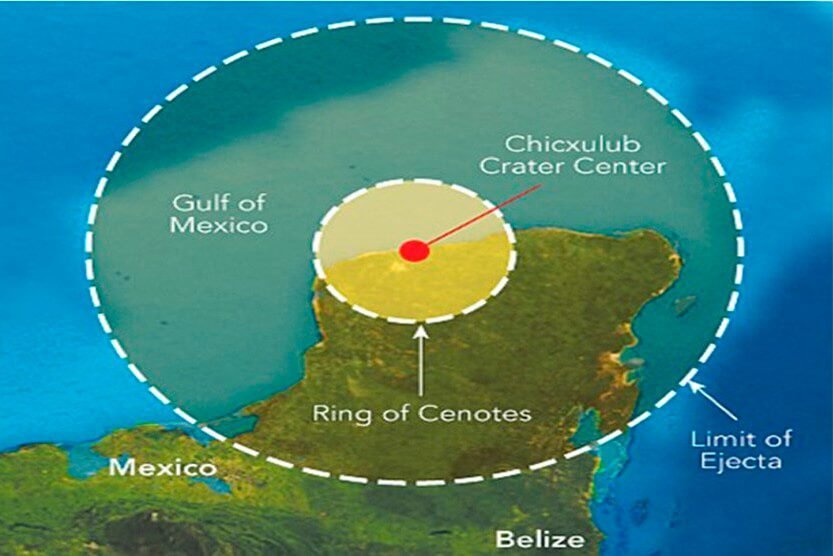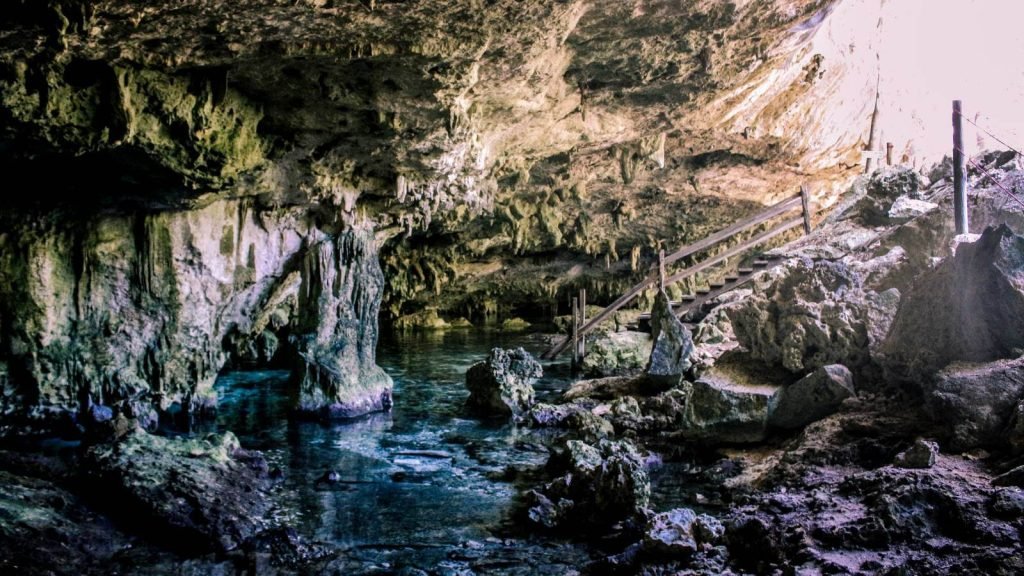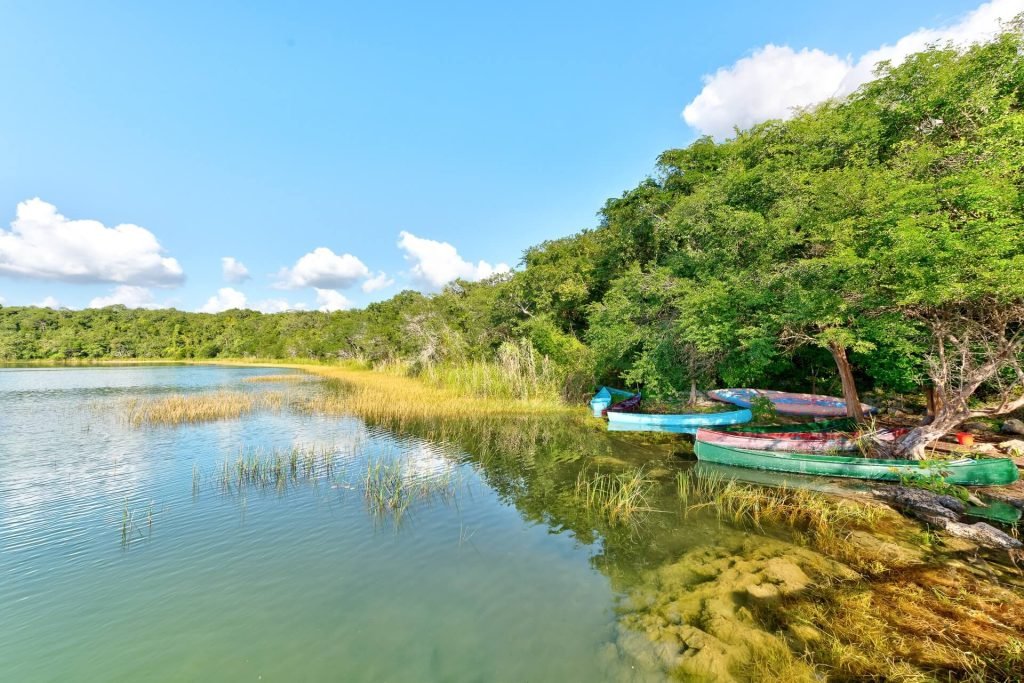The formation of the Yucatan Peninsula . The Yucatán Peninsula, in south-eastern Mexico, is really something special! Its history goes back millions of years and is characterized by rocks, water and even a giant asteroid. The best thing about it? Many of these traces are still visible today. The formation of the Yucatán Peninsula shows how strongly nature can shape the landscape.
How was the peninsula formed? The formation of the Yucatán Peninsula is closely linked to the formation of limestone. Yucatán consists mainly of limestone, a rock formed from the remains of shells, corals and other marine life. Millions of years ago there was a shallow, warm sea here. At some point, the seabed rose and became land, forming the flat landscape we know today.
The big impact – the Chicxulub asteroid Around 66 million years ago, something incredible happened here: a huge asteroid, around 10 km in size, hit Chicxulub. This impact had a major influence on the formation of the Yucatán Peninsula. It caused earthquakes, tsunamis and firestorms. Dust and ash darkened the sky and led to a global drop in temperatures. The end of the dinosaurs is often associated with this event.
The impact left behind a large crater – the Chicxulub crater – which can still be found underground and in the sea today. This great force also changed the limestone layers and led to the formation of caves and underground rivers. This was another important step in the formation of the Yucatán Peninsula.

Water underground – the cenotes There are no large rivers or lakes on the Yucatán Peninsula because the rainwater seeps directly into the ground through the porous limestone. Instead, there is a huge network of rivers and caves underground. In some places, the ceiling collapses, creating so-called cenotes – natural water holes.
In the past, these cenotes were very important to the Maya because they provided them with water to drink. Today, tourists come to swim and dive in the clear pools. The formation of the Yucatán has also produced these impressive natural wonders.

Yucatán has a tropical climate with a rainy season and a dry season. The water that flows through the soil supplies the underground rivers that keep the plants alive. As the soil here is very dry, there are many trees and plants that can survive with little water. The formation of the Yucatán Peninsula has thus created the basis for today’s flora and fauna.

Summary: The formation of the Yucatan Peninsula is truly fascinating. It began as a seabed, became a flat landscape due to the great Chicxulub impact and is now known for its impressive cenotes and cave systems. Yucatán is not only one of the most interesting geological regions in the world, but also a popular tourist destination. The unique nature, the hidden caves and the clear water of the cenotes make Yucatán a real highlight for visitors from all over the world.

